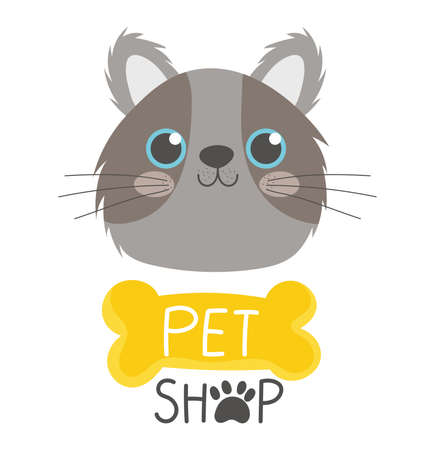Introduction to Cat Nutrition
When it comes to choosing the best food for your cat, understanding feline nutrition is essential. Cats are obligate carnivores, which means their bodies are built to get nutrients primarily from animal-based proteins. They require specific amino acids like taurine, as well as vitamins such as A and D, that are only found in animal tissues. Unlike dogs or humans, cats can’t thrive on plant-based diets alone. The right balance of protein, fat, vitamins, minerals, and water supports everything from their energy levels and immune system to a shiny coat and strong muscles. Whether you’re considering homemade meals or store-bought commercial options, providing a nutritionally complete diet is the foundation for your pet’s long-term health and happiness. Making informed choices about what goes into your cat’s bowl is one of the most impactful ways you can support their well-being.
Understanding Homemade Cat Food
More pet parents are turning to homemade cat food, hoping to give their cats the best possible nutrition. This approach offers clear advantages, but it’s important to weigh both the pros and cons before making the switch from store-bought options.
Pros of Homemade Cat Food
| Advantage | Description |
|---|---|
| Ingredient Control | You know exactly what goes into your cat’s meals. This is especially helpful for cats with allergies or sensitivities. |
| No Preservatives | Homemade food is free from artificial preservatives and additives commonly found in commercial products. |
| Customization | You can tailor recipes to meet your cat’s unique taste preferences and nutritional needs. |
Cons of Homemade Cat Food
| Drawback | Description |
|---|---|
| Nutritional Imbalance | It’s easy to miss essential nutrients like taurine, calcium, or vitamin E unless you carefully follow veterinary-approved recipes. |
| Time-Consuming | Preparing balanced meals at home takes significant time and planning compared to simply opening a can or bag. |
| Cost Variability | The price of ingredients can add up quickly, especially if you’re buying high-quality meats and supplements. |
Real-Life Example: Ingredient Control in Action
Consider Sarah, a cat owner from Texas. Her tabby, Max, developed a chicken allergy. After switching to homemade meals using only turkey and rabbit, Max’s skin issues cleared up. However, Sarah had to work with her vet to ensure Max still received all necessary nutrients—especially taurine, which is vital for heart health in cats.
Key Takeaway:
If you’re considering homemade cat food, consult your veterinarian or a pet nutritionist first. While it allows for ingredient control and customization, the risk of nutritional imbalance is real. Homemade diets require research, commitment, and ongoing oversight to keep your feline friend healthy and happy.

3. Commercial Cat Food: Convenience and Consistency
For many American pet owners, commercial cat food is the go-to option due to its unmatched convenience and reliable consistency. Let’s break down the key pros and cons of store-bought cat food in terms of nutrient balance, regulation, and accessibility.
Nutrient Balance: Scientifically Formulated Meals
Most commercial cat foods are designed by veterinary nutritionists to provide a balanced diet that meets the nutritional requirements established by organizations like AAFCO (Association of American Feed Control Officials). This means your cat receives essential proteins, fats, vitamins, and minerals in each meal. For example, popular brands like Purina or Hill’s Science Diet invest in research to ensure their products offer complete nutrition for cats at different life stages. However, some lower-quality brands may use fillers or artificial additives, which can be less beneficial for your cat’s long-term health.
Regulation: Safety and Quality Assurance
One major advantage of commercial cat food is regulatory oversight. In the U.S., pet foods must comply with FDA guidelines and state regulations, ensuring product safety and ingredient transparency. Manufacturers are required to follow strict labeling rules and undergo routine inspections. This reduces the risk of contamination or nutrient imbalances, giving pet parents peace of mind. Still, occasional recalls do occur—such as the 2007 melamine contamination—so it’s important to stay informed about your chosen brand.
Accessibility: Easy to Find and Store
Store-bought cat food is widely available at grocery stores, big-box retailers like Walmart or Target, pet supply chains such as PetSmart, and online platforms including Chewy and Amazon. This widespread availability means you’re unlikely to run out unexpectedly, even during busy weeks or emergencies. Canned and kibble varieties also have long shelf lives, making them practical for bulk purchasing and storage. On the downside, premium brands can be pricey, which might be a consideration for budget-conscious families.
Real-Life Example: Busy Households Benefit Most
A working professional in Los Angeles might rely on commercial cat food because it fits their hectic schedule—they know each serving meets their cat’s needs without extra prep time. For multi-cat homes or those who travel frequently, the predictability of commercial diets ensures all pets are fed safely and consistently by any caregiver.
Summary
While commercial cat food delivers convenience, consistency, regulated safety standards, and balanced nutrition right off the shelf, it’s essential to choose reputable brands and remain vigilant about recalls or ingredient lists. Understanding these factors will help you make an informed choice for your feline friend.
4. Cost, Time, and Effort: What to Expect
When deciding between homemade and commercial cat food, it’s important to weigh the financial investment, time commitment, and overall effort involved. Each approach has unique demands that can impact your daily life and your budget.
Comparing Costs
Commercial cat food is available in a wide range of prices, from budget-friendly kibble to premium grain-free options. Homemade diets may seem less expensive at first glance—especially if you’re buying ingredients in bulk—but the real costs include not only raw materials but also supplements, kitchen equipment, and potentially consulting a veterinary nutritionist. Here’s a basic comparison:
| Aspect | Homemade Cat Food | Commercial Cat Food |
|---|---|---|
| Weekly Cost (Avg.) | $20–$35 (depends on protein choice) | $10–$40 (varies by brand/formula) |
| Supplements Needed | Yes (often $5–$10 per week) | No (usually included) |
| Special Equipment | Blender, scale, storage containers ($50+ one-time) | None required |
Time Commitment
If you’re making cat food at home, expect to spend a few hours each week shopping for ingredients, preparing meals, and cleaning up. For example, Sarah from Austin prepares a week’s worth of chicken-and-pumpkin meals for her two cats every Sunday afternoon—it takes her about three hours including cleanup. In contrast, opening a bag or can of commercial food takes seconds.
Effort and Convenience
Homemade diets require careful planning to ensure nutritional balance; mistakes can have serious health consequences for your pet. You’ll need to follow recipes precisely and may even want to consult with a vet. Commercial foods are regulated and designed for convenience—perfect for busy pet owners who want reliable nutrition without the hassle.
Real-Life Example: Balancing Work and Pet Care
John from Seattle works long shifts at a tech company and relies on high-quality commercial dry food for his indoor cat. He appreciates being able to “scoop and serve” before heading out the door. Meanwhile, Lisa in Denver enjoys cooking and sees meal prep as bonding time with her senior cat; she budgets both money and time for this weekly ritual.
The bottom line: Homemade cat food can be rewarding but requires more effort and ongoing expenses than many people expect. Commercial foods offer unmatched convenience but may cost more over time if you opt for specialty brands. Choose what fits best with your lifestyle and your cat’s needs.
5. Health and Safety Considerations
When deciding between homemade and commercial cat food, your pet’s health and safety should always be at the forefront. Both options come with unique risks and require careful attention to avoid common pitfalls that could compromise your cat’s well-being.
Contamination Risks: What You Need to Know
Homemade cat food, while customizable, carries a higher risk of contamination if not handled properly. Raw meat diets, for instance, can expose your cat (and even your family) to harmful bacteria like Salmonella or E. coli. Cross-contamination in your kitchen is another concern—using the same cutting board for raw meat and other foods without proper cleaning can spread germs. On the flip side, commercial cat foods are manufactured under strict safety regulations, but recalls do happen due to contamination or improper ingredient sourcing. Recent recalls in the US have highlighted the importance of checking brands for their recall history and transparency.
Nutritional Imbalances: A Hidden Danger
One of the most common health risks with homemade diets is nutritional imbalance. Cats need specific nutrients like taurine, arachidonic acid, and vitamin A—deficiencies can lead to severe health problems such as heart disease or blindness. Commercial foods are generally formulated to meet AAFCO standards, providing balanced nutrition by default. However, feeding only one type of commercial food long-term may still result in missing out on variety or developing sensitivities.
Veterinary Insights: How to Feed Safely
- Consult a Veterinarian: Always discuss new recipes or diet changes with your vet or a certified pet nutritionist before making the switch.
- Follow Trusted Recipes: If preparing homemade meals, use recipes vetted by veterinary experts—don’t just rely on internet blogs.
- Store Food Properly: Whether homemade or commercial, store food in airtight containers and keep them refrigerated or as directed on packaging to prevent spoilage.
- Watch for Recalls: Regularly check FDA recall lists for commercial brands you use and sign up for notifications if possible.
Real-World Example: Learning from Experience
A cat owner in Ohio began preparing homemade chicken-based meals for her tabby but noticed lethargy after a few weeks. Her vet identified a taurine deficiency from an incomplete recipe—a quick switch back to a balanced commercial diet resolved the issue. On the other hand, a California household using a popular kibble faced a recall scare due to potential mold contamination; they promptly transitioned to another reputable brand after consulting their vet. These examples underscore the importance of vigilance and informed decision-making no matter which feeding method you choose.
6. What Veterinarians Recommend
When it comes to choosing between homemade and commercial cat food, U.S. veterinarians generally emphasize the importance of balanced nutrition and safety for your pet. The American Veterinary Medical Association (AVMA) and many board-certified veterinary nutritionists point out that commercial cat foods are formulated to meet strict nutritional standards set by the Association of American Feed Control Officials (AAFCO). These standards ensure that commercial diets provide all essential vitamins, minerals, and nutrients required for a cat’s health over time.
Expert Opinions on Homemade Cat Food
Many veterinarians acknowledge that homemade cat food can be a good option in certain situations—such as for cats with specific allergies or medical conditions—but only if recipes are created or approved by a qualified veterinary nutritionist. Cats have very specific dietary needs, including taurine, vitamin A, and arachidonic acid, which are not always present in sufficient amounts in homemade meals unless carefully planned. Mistakes in homemade diets can lead to serious health issues like heart disease or blindness.
The Pros and Cons According to Vets
Veterinarians often highlight the convenience, safety, and consistency of commercial foods as major benefits for busy pet parents. Commercial diets are rigorously tested for quality control, ensuring that each batch is safe and nutritionally complete. On the other hand, homemade diets require significant time investment and ongoing consultation with professionals to maintain balance—and even then, there’s always a risk of unintentional deficiencies.
Making an Informed Choice
The consensus among U.S. veterinarians is clear: If you’re considering making your own cat food, always do so under the guidance of a veterinary nutritionist to avoid common pitfalls. For most pet owners, high-quality commercial cat food provides peace of mind and meets all their cat’s nutritional needs without the guesswork. When in doubt, consult your vet—they’ll help you tailor a diet plan that keeps your furry friend healthy and happy.
7. Making the Right Choice for Your Cat and Lifestyle
Choosing between homemade and commercial cat food isnt a one-size-fits-all decision. Each option comes with its own set of benefits and challenges, and the best choice ultimately depends on your cats unique needs as well as your lifestyle and resources.
Key Takeaways
- Nutritional Balance: Commercial cat foods are typically formulated to meet strict nutritional standards, while homemade diets require careful planning, research, and often veterinary guidance to ensure all dietary needs are met.
- Convenience vs. Control: Commercial foods offer convenience and consistency, saving you time. Homemade diets give you control over ingredients, which can be essential for cats with allergies or sensitivities.
- Cost Considerations: High-quality commercial foods may cost more upfront, but preparing balanced homemade meals can also become expensive—especially when supplements are included.
- Time Commitment: Homemade food demands significant preparation time and ongoing effort, while commercial options are ready to serve straight from the bag or can.
Action-Oriented Guidance
- Assess Your Cats Health: Consult your veterinarian before making major changes to your cats diet. If your pet has special dietary needs, allergies, or health conditions, professional guidance is crucial.
- Evaluate Your Lifestyle: Consider how much time and effort you can realistically dedicate to meal prep. If youre frequently busy or travel often, commercial food may be more practical.
- Start Small: If youre interested in homemade diets, begin by supplementing high-quality commercial food with occasional homemade treats or meals. Monitor your cat’s response closely.
- Stay Informed: Whether you choose homemade or commercial food, keep up-to-date with pet nutrition guidelines and recall information. Regularly check in with your vet to ensure your cat stays healthy.
The Bottom Line
No matter which feeding method you select, the most important factor is providing complete and balanced nutrition tailored to your cat’s age, health status, and preferences. By thoughtfully weighing your options and seeking expert advice, you can confidently choose the approach that works best for both you and your feline companion.


